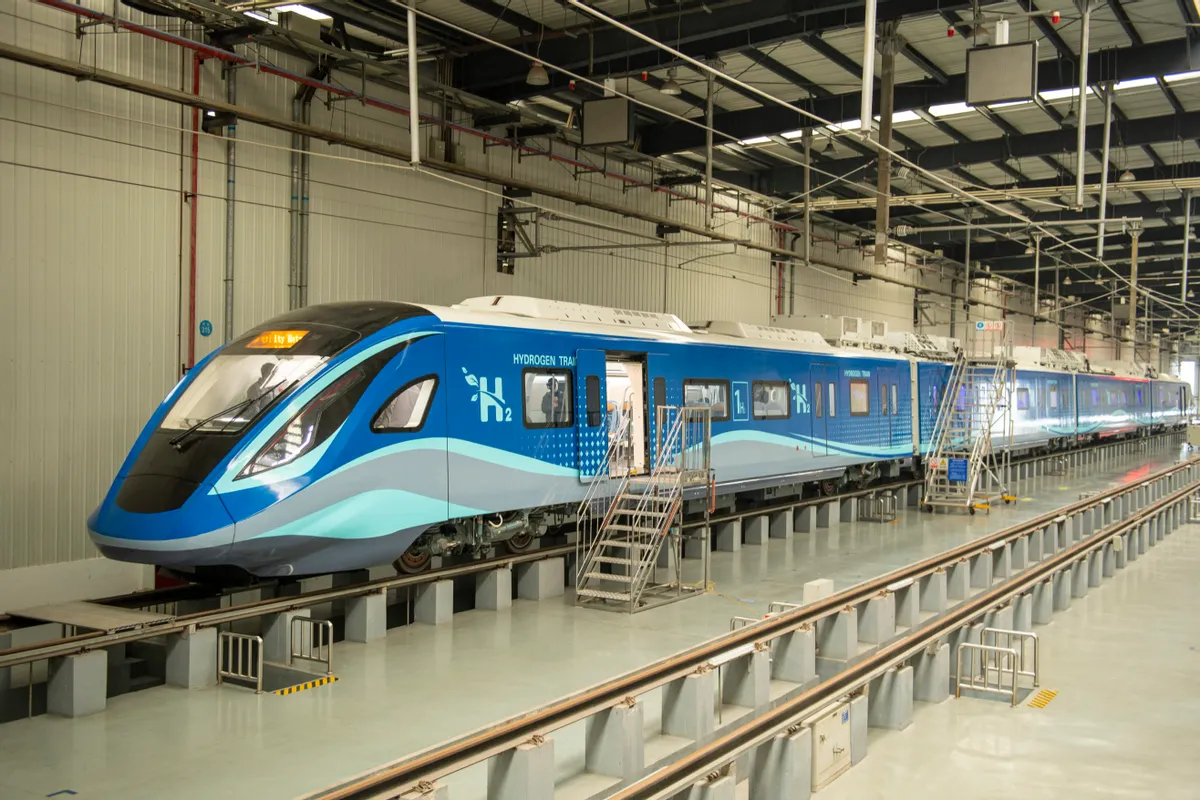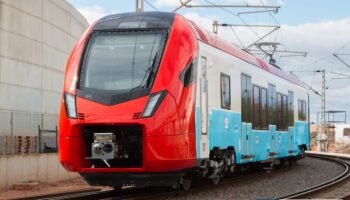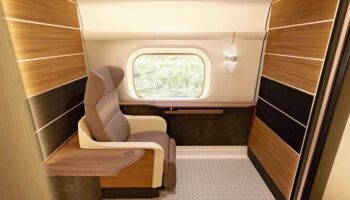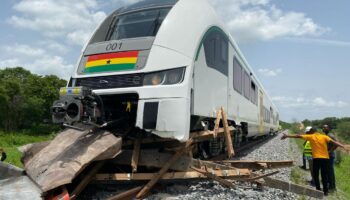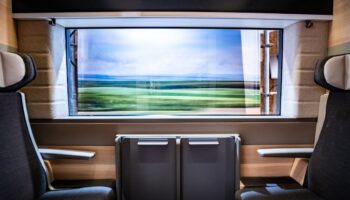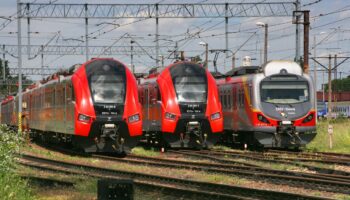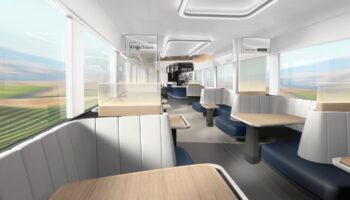China, South Korea: Traction systems of both trains are equipped with fuel cells and supercapacitors; the travel range on a single charge reaches 600 km. With a top speed of 160 km/h, CRRC’s train outruns the one by South Korea’s Woojin Industrial Systems accelerating to 110 km/h.
CRRC presents a new four-car iteration of its Fuxing high-speed train. Like in other hydrogen powered trains, energy is generated by cool-flame combustion of hydrogen and oxygen in fuel cells. The hybrid traction system is equipped with a hydrogen fuel cell system, hydrogen storage system, cooling system, storage batteries, etc. Hydrogen, temperature, pressure, and other sensors of the fuel cell system can detect faults. In case of emergency, the driver will be alerted, and the fuel cells will be isolated from the train energy system. Once the fault is eliminated, the fuel cell system is restarted.
The hydrogen train has digital solutions usual for new CRRC’s trains. Automatic train operation (GoA2) features wake-up, start, stop and return to depot functions. Monitoring sensors control performance and state of the whole train, and 5G communication serves to transmit data. With hydrogen, the train is expected to reduce CO2 emission level (-10 tonnes per year) compared to diesel and allow not to electrify rail lines.
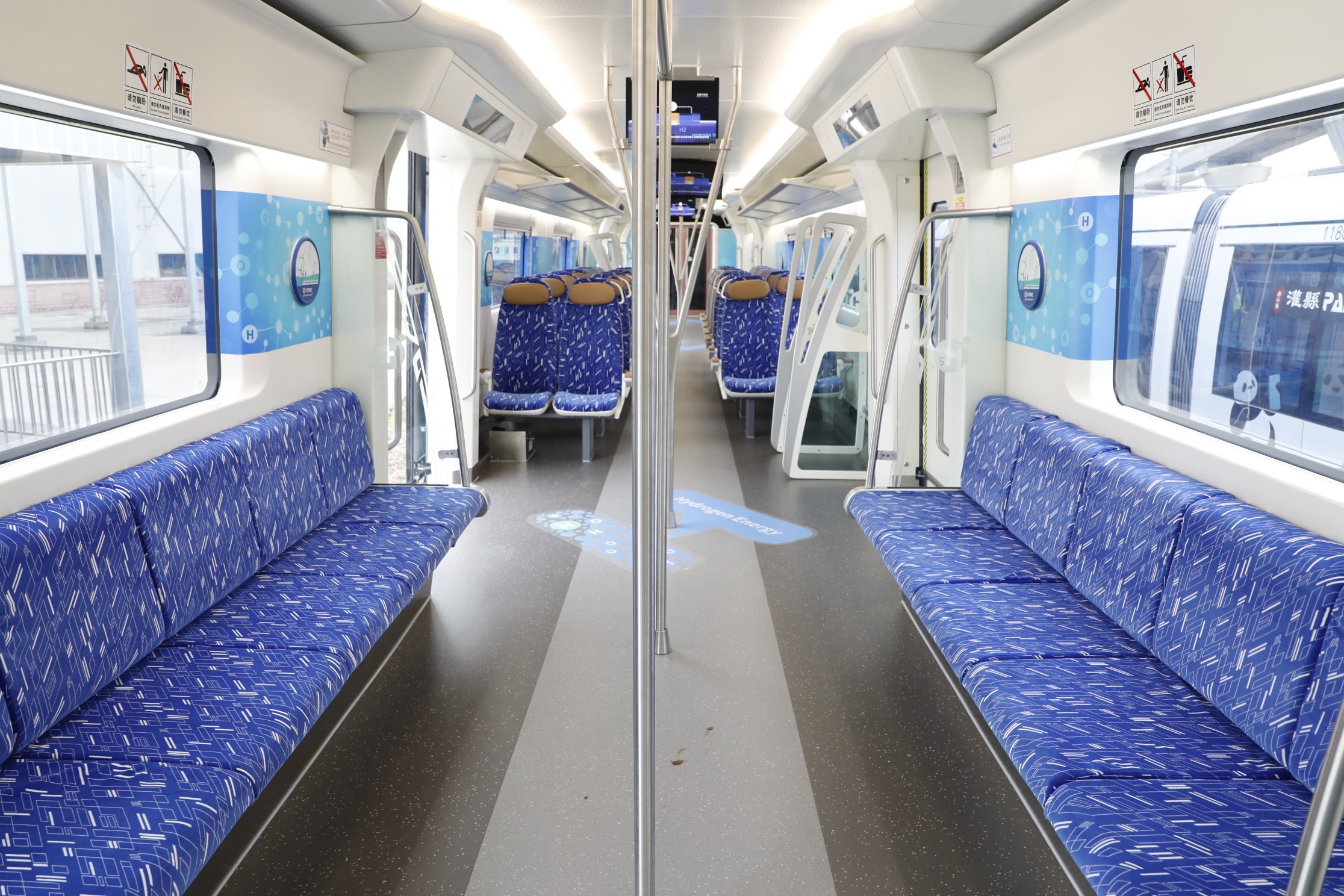 Cabin of the first hydrogen train by CRRC. Source: China Science/ twitter.com
Cabin of the first hydrogen train by CRRC. Source: China Science/ twitter.com
This is not the first hydrogen rolling stock by CRRC. The company presented a shunting locomotive in 2021, and hydrogen trams in the mid-2010s. Last November CRRC signed the first export agreement for supply of a hydrogen locomotive to Chile.
Almost at the same time, South Korea’s Ministry of Land, Infrastructure and Transport and the Korean Railway Research Institute (KRRI) unveiled a prototype hydrogen train. The project was implemented by a group of seven organizations, including Woojin Industrial Systems, rolling stock manufacturer, and Korail, national railway operator, and was led by KRRI. The test operation of the train will begin this year.
The hydrogen train project took five years to complete, and the state reimbursed most invested money, $17.5 mln of $20+ mln. Each car has rooftop equipment: a 200 kW fuel cell and 14 rooftop hydrogen storage tanks totalling 63 kg per car and 166 per train. Lithium-ion batteries are under the cars between the bogies.
The train has smart energy management and a 1.2 MW hybrid traction system. The project allowed establishing of a stationary hydrogen charging station and preparing of a plan and draft standards for the development of the hydrogen charging infrastructure for the rolling stock.
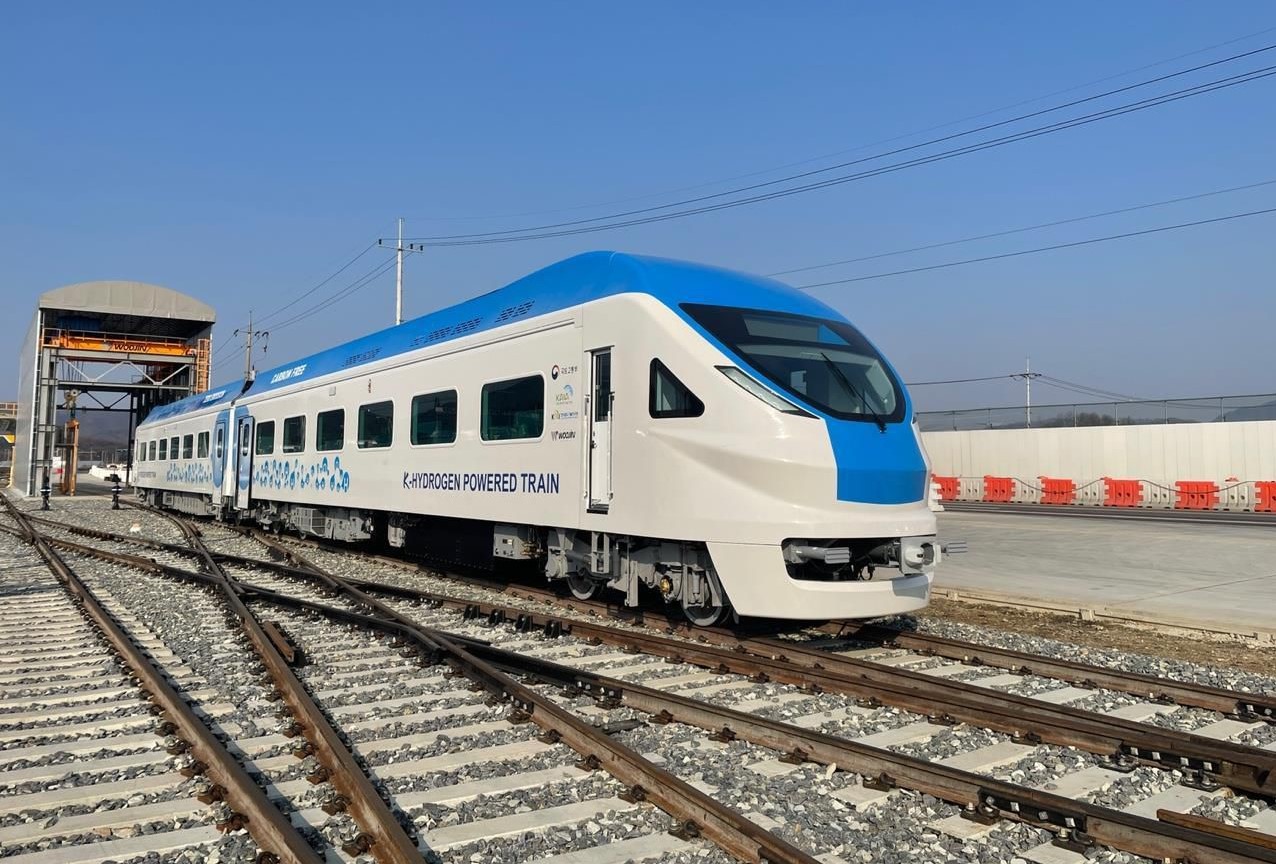 Prototype hydrogen train by Woojin Industrial Systems. Source: biz.chosun.com
Prototype hydrogen train by Woojin Industrial Systems. Source: biz.chosun.com
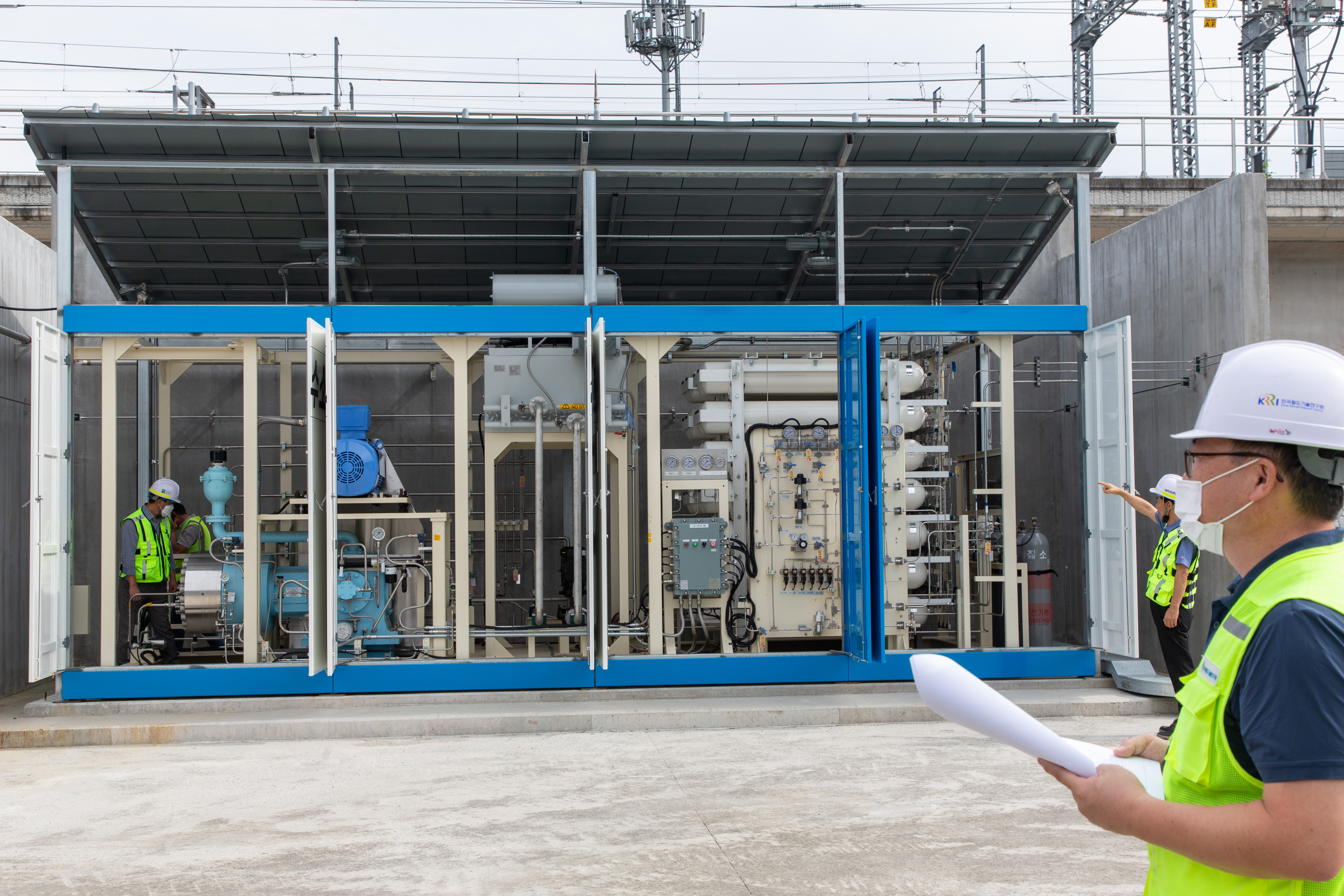 Charging station for a hydrogen train in South Korea. Source: KRRI
Charging station for a hydrogen train in South Korea. Source: KRRI
In 2022, several market players introduced multiple units on hydrogen fuel cells. In February, Toyota and Hitachi unveiled Japan’s first Hybari train. In May, Siemens Mobility showed its Mireo Plus H. One of the breakthroughs of InnoTrans 2022 expo was FLIRT H2, a train by Stadler. CAF also began testing its new hydrogen vehicle, Civia, converted from diesel and based on Toyota fuel cells.
The most impressive progress with hydrogen traction was demonstrated by Alstom. Last year, passenger service only by Coradia iLint trains started on a line in Germany; the demo run took place on the verge of InnoTrans 2022. The train travelled 1,175 km without stopping to refill its hydrogen tank, and that is 17.5% more than the declared range.





